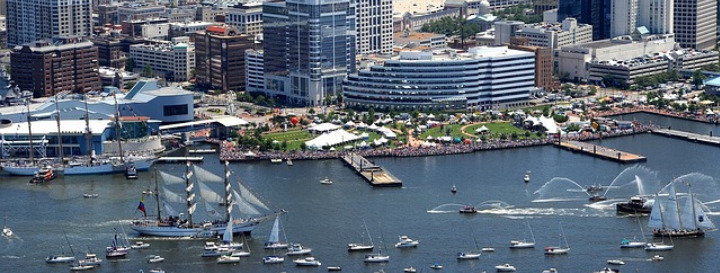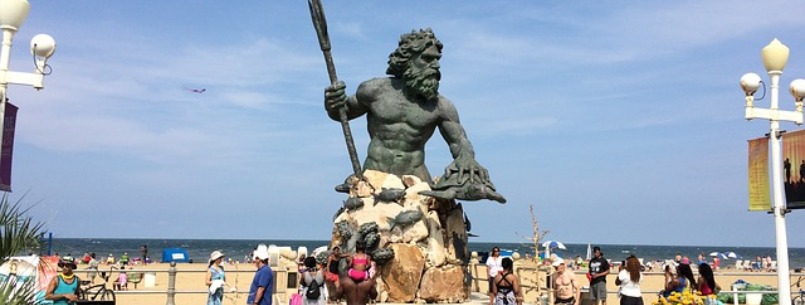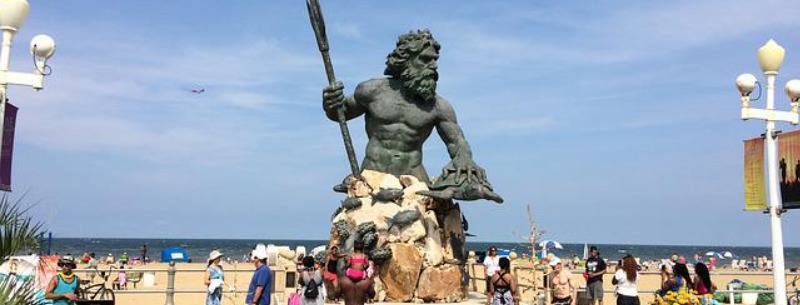Best Virginia Beaches 2024
One of the busiest of Virginia’s Atlantic east coast ports, Norfolk sits midway along the coast at the point where the Chesapeake Bay empties into the Atlantic Ocean.
Virginia’s only heavily industrial center, it is not a particularly pretty place, but it does have a rich maritime and naval heritage, as well as the Chrysler Museum, one of the nation’s best art galleries.
Fifteen miles east of Norfolk, along the open Atlantic, low-key Virginia Beach draws summer sun-seekers to the state’s only real resort, surrounded by broad beaches and tidal marshlands.
The rest of Virginia’s Atlantic coast is on its isolated and sparsely populated Eastern Shore, where the attractive little island town of Chincoteague serves as the headquarters of a wildlife refuge that straddles the Maryland border and forms part of the Assateague Island National Seashore.
Chincoteague
Much the most appealing destination on the eastern shore, Chincoteague occupies a beautiful barrier island just south of the Maryland border.
Although it’s little more than a village, its two principal streets hold a fair assortment of motels and restaurants, and it makes an appropriately relaxed base for exploring Assateague Island National Seashore.

Assateague Island National Seashore and the Chincoteague National Wildlife Refuge offers miles of undeveloped beaches, marshes and forests stretching from Virginia to Maryland.
Known for its great abundance of migratory birds and wild horses, it is the perfect place to get away from it all.
During the summer you can find crowded beaches or go for a little walk up the beach and find solitude.
From Bird watching, surfing, swimming, fishing, crabbing or boating, the Chincoteague, Assateague area offers it all. Hiking, bike trails, lighthouse tours, guided wildlife tours and exhibits are offered by the Park Service and Wildlife Refuge throughout the year.
Chincoteague Island provides services to suit every need and taste, from modern first class motels, shady campgrounds and vacation rentals to permanent home sites.
Shop at the local grocery, drug, or hardware store, explore the specialty shops on your way to a four star dining experience in the many local restaurants.
During the summer months, enjoy the free trolley service or free fishing from the Memorial Park Pier.
Norfolk
A strategic location at the broad mouth of the Chesapeake Bay, and an extensive deep-water harbor made colonial Norfolk the main American trading port, and in the mid-eighteenth century it was the largest city in Virginia.
After being burned by the British in 1775, and suffering naval bombardments during the Civil War, Norfolk never regained much character, and despite recent efforts to redevelop its waterfront, the modern city is little more than a supply depot for the vast naval shipyards.
On the downtown waterfront is Norfolk’s premier attraction, Nauticus: The National Maritime Center, housed in a formidable replica battleship.

The Nauticus’s steep admission price is justified by the interactive oceanography exhibits, the giant-screen films and the country’s first group virtual reality experience, where goggled visitors sink into Loch Ness and protect Nessie’s eggs from unwelcome scientists.
The more serious-minded will enjoy the on-site Hampton Roads Naval Museum, which documents the growth of naval operations in the area. The adjacent International Pier is frequented by colossal US and foreign ships, which can be toured if they’re docked for any length of time.
An extraordinary array of oriental antiquities is displayed in the intimate Tudor-style former home now known as the Hermitage Foundation Museum, on the Lafayette River at 7637 N Shore Rd. Its exhibits include Persian rugs, medieval tapestries, rare ancient Chinese ceremonial vessels, Roman glass and Art Nouveau.
The Chrysler Museum, half a mile north of the downtown waterfront on Olney Road and Mowlbray Arch, holds the eclectic collection of car magnate Walter Chrysler Jr.
It includes a little bit of everything, from ancient Greek statuary to French Impressionist paintings, Franz Klein abstractions and Mayan funerary objects, as well as a world-class collection of Tiffany and Lalique glassware.
Virginia Beach
In both character and geography Virginia Beach is about halfway between Maryland’s huge, frenzied Ocean City and North Carolina’s untamed open Outer Bank.
Virginia’s only real summer resort has grown to become the largest city in the state, but takes care to pitch itself as a family destination; among steps to deter the Spring Break crowd, Virginia Beach – home to evangelist/politician Pat Robertson’s Regent College – has enacted anti-cruising laws that make it illegal to drive past the same spot twice within three hours.

That said, the oceanfront vicinity can be a monument to tackiness, and there are several testosterone-filled surfer bars. Fortunately a multimillion dollar program to widen the beach keeps it from getting too sardine-like and the overall lazy atmosphere actually leads some to stay longer than planned.
The city’s focus is its long straight sandy beach, lined with all the usual hotels and motels, and backed by a boardwalk strip of bars, restaurants and nightclubs.
During the day, the main activities are sunbathing and playing in the waves; Virginia Beach is one of the main east coast surfing centers, hosting the summer-long Billabong competitions.
Away from the sands, most of the action is along Atlantic Avenue, the main beachfront drag.

High-tech interactive exhibits and an IMAX theater combine at the Virginia Marine Museum, which features all things aquatic, from submarines to seabirds, and has a pleasant nature trail linking its two main buildings.
Once the people-watching on the town beach starts to pall, head a few miles up or down the coast to find some beautiful and much more peaceful stretches of golden sand.
To the south lie the four-mile-long Back Bay National Wildlife Refuge, where you can walk or fish but not officially swim or sunbathe, and False Cape State Park.
Closer at hand to the north, the thick woodlands of First Landing State Park was the site at which the first English settlers touched land in 1607 before moving on to Jamestown; it is now popular with weekend boaters and cyclists, and has a beach on Chesapeake Bay.
